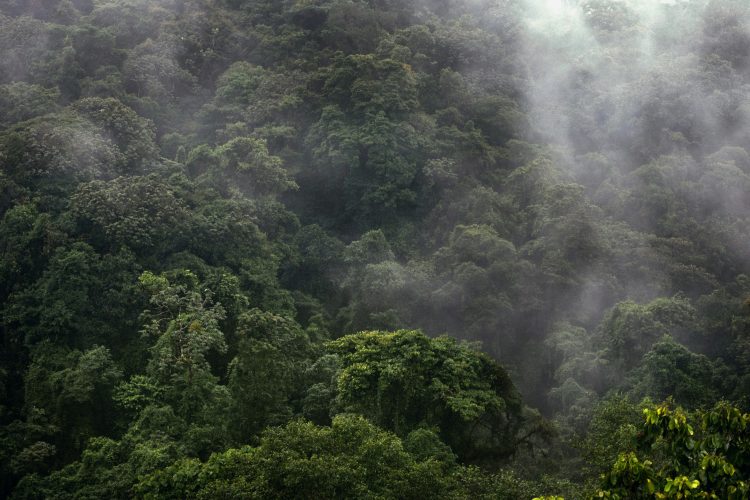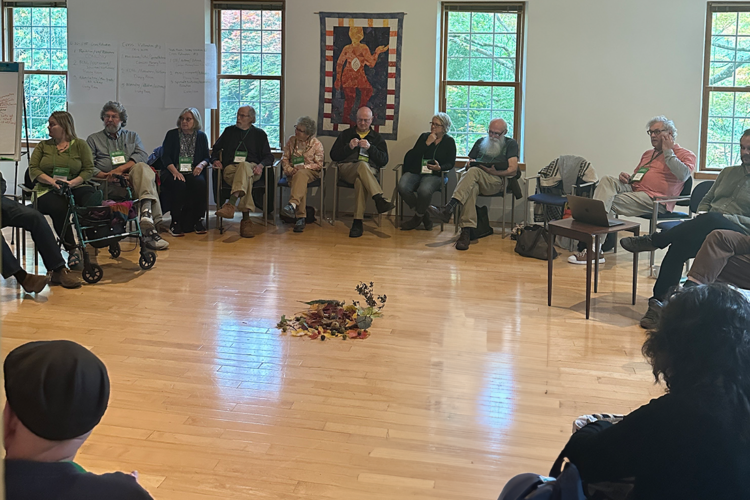A Path to Changing Hearts–An Interview with Alan Burns

Quakers have joined with many other groups and people of good will in the effort to do something about climate change. We want to be better stewards of the environment, combat global warming, stop poisoning the environment, reduce our use of fossil fuels, and so on. But what can a single individual or a small group of people really accomplish? The political and financial forces that push back against policies that might change the environmental equation are enormous. We see them in the inertia and discord that have prevented any of the international meetings on the environment from achieving their goals. The following interview is meant to describe how one individual has followed his own leading to do something about the environmental crisis, something much more public and “heroic” than many of us are willing to undertake.On Sunday, April 5, Alan Burns presented the forum at Charlotte Friends Meeting. A long-time attender of the meeting, he described his participation in a 625-mile walk for the environment in the Philippines. He was the only foreign participant. He also explained his new practice of fasting on the first day of every month, in solidarity with many others around the world seeking to combat climate change.
Alan spoke for about 20 minutes, and then opened the floor for questions. The first question, although politely posed, was jarring. “What does walking a long way in a distant country have to do with combating climate change?” And I thought to myself, “yes, and what does not eating for a day each month have to do with it?” The following interview with Alan is an attempt to answer these questions.
Alan, could you tell me how you first got interested in environmental issues?
AB: It was probably around 2000 that I became aware of global warming as an issue. I’d become a serious environmentalist some 40 years ago when I became a vegetarian.
Before we get to the walk in the Philippines, could you describe some of the actions you have taken since getting interested in the cause of the environment?
AB: I guess the first was joining the state group fighting against Duke Energy’s plans to build two 800MW coal-fired plants. We eventually managed to reduce that to one. In 2001 I helped develop the North Carolina Green Party since the two-party system seemed paralyzed in confronting pollution. By 2006 I was fully investigating climate issues, and in late 2008 launched thinkglobalgreen.org, a web site I update daily to educate people about the causes and solutions to climate change.
Tell me about the origin and purposes of the Philippines march.
AB: In the aftermath of Typhoon Haiyan, the world’s strongest storm ever to make landfall, the Philippine Climate Commissioner, Naderev Yeb Sano, made a passionate appeal at the Warsaw COP talks for world action to halt climate change. He fasted there 14 days with widespread support around the world. Over time Yeb developed the 40-day walk (1,000 kilometers) from Manila to Tacloban, his family’s home and where Typhoon Haiyan made landfall on November 8 2013. With the walk he hoped to bring world attention to show the Philippines as one of the leading nations in the world affected by extreme storms. He had hoped to bring this action to world leaders’ attention at the following month’s COP-20 talks in Lima, Peru. (However, the U.S. and Europe exerted pressure to have him removed from the commission, so he did not attend.)
How did you get involved in the march?
AB: Late in 2013, I’d been asked by Dr. Jill Stein, 2012 Green Party presidential candidate, to develop a 10-day global fast as part of the Global Climate Convergence she was developing for Earth Day to May Day 2014. I quickly realized I needed to contact Yeb Sano to make this a possibility if I was to reach outside the United States. Gradually Yeb and I joined each other’s fasts and in April, Climate Action Network (CAN), a global environmental organization, collaborated with Yeb to develop the Fast for the Climate (FFtC). In short, CAN then asked me to head up FFtC in the U.S. Subsequently I learned of the Climate Walk for Justice beginning in Manila October 2.
What did you find most difficult?
AB: Before the walk, getting the extended visa from the Philippine Consulate was a headache. On the walk itself, the hardest part was acclimating to the tropics, as I had never been that far south or to Asia. Not understanding the Tagalog language prevented me from knowing what was going on most of the time. As a result, I was unsure where we would arrive each night or where we would sleep. The regular hard floors most of the time didn’t make for a good night’s sleep. The humidity I was adapted to before going, but rarely being able to have dry clothing was tough. Over time, thigh problems from daily walking caused pain and finally a shin problem three days out from Tacloban prevented me walking for two days. That was very upsetting as I’d hoped to complete the whole journey.
What gave you the greatest satisfaction?
AB: Being accepted by the Filipinos as one of them. Despite dreadful Internet connections in the country, being able to send back reports to Charlotte bloggers and FFtC did make the trip over there positive in that respect. I found Yeb to be a soul-mate in the sense that our temperaments and outlook were so similar. Also, the countryside was so beautiful and the people, though third-world impoverished, were generous and friendly.
Do you see your participation as a religious act or an act of social protest? What do you think you accomplished?
AB: It wasn’t an act of social protest. As with the fasting element, it was a spiritual journey. Both the fasting and undergoing extreme conditions is taking upon oneself the suffering that so many in the third world are obliged to endure because of climate extremes caused by the rich world’s arrogant use of fossil fuels for selfish ends. Although the Filipinos were predominantly Catholic and may have viewed their participation in a religious context—especially Yeb—this is not how I perceived it. My participation was more an extension of my attempt to educate others in a more meaningful way than I had been doing sitting behind a computer researching. I needed to witness what climate destruction was like first-hand.
It’s not easy to define what I accomplished. Because of interviews and blogs perhaps I helped educate more people about what was actually occurring because of extreme climate. Perhaps in producing a 60-minute YouTube program and a book about the walk, my experience will reach a wider audience.
What about the future? What are your plans?
I hope to have the local public access TV program aired by mid-August and on YouTube soon. The book has taken more time and is now available on Amazon. My plans are in late September to join in Rome the Filipinos I walked with in Asia and join the People’s Pilgrimage from the Vatican to Paris in time for the COP21 talks in Paris. I’m particularly looking forward to a stopover in Assisi where the walkers will meet with Pope Francis who has committed himself to a desire to influence the Paris talks. With better equipment for recording the progress of the walk, thanks to a generous offer that provided me with a laptop and smartphone, I hope to report back more stories along the way. In Paris I expect to assist during the two weeks of the talks to again support the FFtC working group as I did in Lima during COP20.
How does fasting and walking aid the cause?
AB: This is the unknown factor. Yeb alluded to Gandhi’s Salt March as a vision of the Tacloban walk, but there is no way to know what the outcome will be. The object is to change the hearts and minds of people and world leaders—not to specify certain outcomes. The global fast I was involved with in 1983 on the nuclear arms race provided me with evidence that such acts—particularly fasting—can be very powerful. In walking we are meeting with people along the way, and, we trust, getting media attention as to the reasons climate acts are so necessary right now. Inasmuch as it is non-violent, as Gandhi showed, it doesn’t attract resentment; there is no harm being done to others or property.
In the end, I go back to the original questions: “How does walking a long distance in a foreign country help the environment? How does fasting help the environment?” Reflecting on Alan’s responses to my questions, it is clear that there are no easy answers. But his responses do indicate to me his understanding that whatever answers there are to our environmental problems, they go beyond technological solutions. We already know the technical fixes. The vexing problem is people and issues that lie in the human heart. Pilgrimage and fasting are ancient methods of changing the heart, first of the walkers and fasters, and then of those who open themselves up to being inspired by them. These methods are appropriate even in the 21st century. They create a spiritual solidarity that can be contagious. If so led, we Quakers should consider trying them.
Both Alan Burns and Jeff Meyer, a retired professor, attend Charlotte Friends Meeting.
Editor’s note: Alan’s book is available on Amazon here: http://tinyurl.com/poyq4fa

